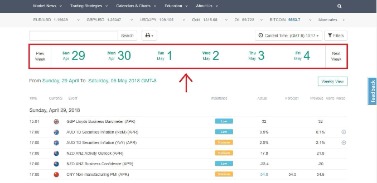This is when forced liquidations and margin calls kick in. A bull flag pattern forms when there is a steep rise in the price of the underlying asset, followed by a period of consolidation in a narrow trading range. The trading range appears rectangular and may establish parallel lines of support and resistance. The bullish flag pattern derives its name from its appearance on a price chart, which resembles a flag pole with a flag extending from it, angled slightly downward.
- It usually happens when the price declines sharply and then form some consolidation.
- Some bears also go in, hoping that the price will decline.
- A bull flag is a bullish chart pattern formed by two rallies separated by a brief consolidating retracement period.
- In order to identify a bull flag pattern failure, there will need to be certain components on the price chart of a market.
- You should notice that the uptrend should be rather sharp and accompanied by strong volume.
We’ve looked at a classic bull flag and bull pennant flag already. First, there must be a strong uptrend — or better yet a vertical spike. Is it smart to watch for breakout patterns like the bull flag?
What is a Bull Flag Chart Pattern?
Hence, traders have a fundamental back drop to support the technical picture for additional strength in AUD. Flag patterns start off violently as the ‘other’ side gets caught off guard on the trend move or as bulls/bears become overambitious. On bull flags, the bears get blindsided due to complacency as the bulls charge ahead with a strong breakout causing bears to panic or add to their shorts. Once the stock peaks out, the bears regain some confidence as they add to their short positions only to get trapped again when the breakout forms causing more short covering.

The stock could give a false signal in the pennant or flag, and then fail to rally again. All bull pennant flags are bull flags … but not all bulls flags are pennant flags. The support and resistance lines on a bull pennant flag resemble a cone or triangle.
How to set your entries, stops, and exits when trading the Bull Flag Pattern
Second, it has a consolidation phase, as bulls and bears battle it out. In most cases, this usually happens during a period of low volume. Second, the pattern can expose you to false breakouts if you are not careful. After a period of consolidation, the flag must resume the upward trend in order to be considered a bullish flag pattern.
Tsunoda “in a bit of trouble” after Ricciardo’s return to F1 – Crash
Tsunoda “in a bit of trouble” after Ricciardo’s return to F1.
Posted: Tue, 15 Aug 2023 07:00:00 GMT [source]
Securities products offered by Open to the Public Investing are not FDIC insured. Apex Clearing Corporation, our clearing firm, has additional insurance coverage in excess of the regular SIPC limits. The pattern formed by inverting the bull flag stock pattern is called the bear flag stock pattern. If a trader has decided to buy as soon as the price rises out of the flag area, the next question is when should they sell.
Cons of using the bullish flag pattern
The inverse head and shoulders pattern occurs during a downtrend and marks its end. The chart pattern shows three lows, with two retracements in between. The pattern completes and provides a potential buy point when the price rallies above the neckline or second retracement high.
The magenta and the purple arrows measure the size of the Flag and the size of the Pole. As you can see, these two sizes are applied on the chart starting from the breakout point. And as each target is hit, the stop loss order should be adjusted accordingly as shown on the image above. Once the trade is executed, you should put your initial stop loss right below the lowest point of the flag as shown on the image (S/L 1).
) What Is a Flag?
Bullish and bearish flags are important continuation patterns you can use in the market today. Still, we recommend that you spend a lot of time learning them before you try them with actual funds. Once you entry a flag pattern, the targets can be derived from many indicators. The initial targets on all flag patterns will be the high or low of the flagpole. If the flagpole price peak is exceeded, then you can use Bollinger Bands and or fib price levels. To get fib price level targets, first plot the high to low and low back to high price levels of the flagpole.
The sharp drop represents the when is a bull flag invalidated pole and the price movements during the period of consolidation that follows represent the flag itself. You can see an example of the bearish flag pattern in the chart below. There are several reasons why many day traders use the bullish flag pattern.
In the chart below, we see that the USD/JPY formed a bullish flag. In the first instance, the price dropped to the 23.6% Fibonacci retracement level. Had it dropped below the 50% retracement, the pattern would have been invalidated. For when is a bull flag invalidated example, an inverse head-and-shoulders pattern can mark the bottom of a crash before the price resumes an uptrend. A regular head-and-shoulders pattern, on the other hand, can mark the top of a bull run before a bear market starts.
- The support and resistance lines on a bull pennant flag resemble a cone or triangle.
- When using moving averages and trend lines (as mentioned in tip 4), it is a useful tactic to review the relationship of price action with the support or resistance (S&R) level.
- In this case, you should place a buy stop slightly above the upper side of the flag.
- The figure starts with a bearish trend impulse and turns into a correction, which is directed upwards.
First, let’s examine the bigger picture trade idea in the simulator. Notice how on this 30-minute chart, AMC has been mostly range-bound for a few days, bouncing between support and resistance. Nonetheless, for a pennant pattern to be bullish, you want it to have similar characteristics https://g-markets.net/ to a bull flag with regard to volume. The only real difference is that the pattern will be creating higher lows and lower highs into the apex. What is the difference between a bull flag and a bear flag? The bear flag is a countertrend consolidation in a downtrend.

Damian Papworth
With his almost 2 decades of experience in the Australian digital marketing industry, Damian Papworth has quickly become the authoritative voice of support for digital marketers around the world, providing them with innovative solutions that help them overcome operational obstacles in their business and unlock their potential to scale and succeed.
Damian’s background includes running his own retail digital agency for many years and it’s this experience that inspired Damian to set up Globital, a white label, wholesale digital marketing solution laser-focused on supporting digital agencies in providing more robust, more effective and more successful digital marketing efforts to their clients.